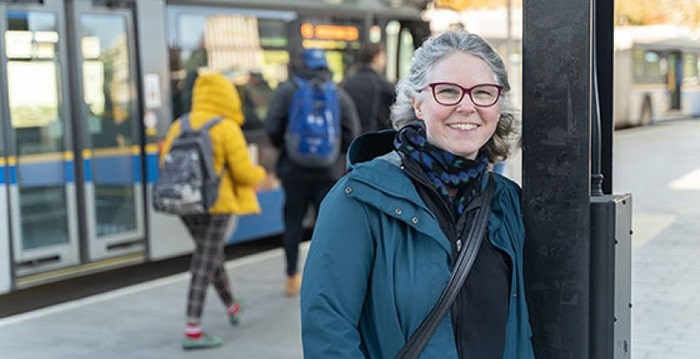Thousands of Vancouverites traverse the city by bus or SkyTrain every day, and one University of B.C. researcher is now turning the public transit system into a lab to study how people navigate the city’s unwritten rules and social differences.
 University of B.C. sociologist Amy Hanser has launched a study looking at what how people interact with others on public transit says about Vancouver. Photo courtesy University of B.C.
University of B.C. sociologist Amy Hanser has launched a study looking at what how people interact with others on public transit says about Vancouver. Photo courtesy University of B.C.
Sociologist Amy Hanser says public transit is one of the few spaces in the city where people regularly come into close contact with different people.
“Cities are often represented as places where different types of people mix and intermingle,” she says. “But if you think about it, we don’t interact that much with strangers as we move through the city… The public bus is a perfect place to study such interactions. It is a nominally public space where all kinds of people not only mix but do so in close proximity.”
For the first part of the study, Hanser says, she will ride buses making observations and notes along the way. She says she will be looking at things like where people sit, under what circumstances people interact and how people navigate around one another.
Following that, Hanser will then start interviewing bus passengers about their experiences and perspectives — something she’s had students do in the past.
“… many people are actually very thoughtful about their experiences on public transit,” she says. “One person described having a ‘bus family’ — people he recognized because they always ride together, but not wanting to actually talk to them because that would come with the obligation to talk to them all the time.”
For the study, Hanser has chosen routes that traverse the city moving through different neighbourhoods.
“I am intrigued by how public buses transform as they move through the city, taking on the character of different neighbourhoods as people get on and off,” she says, adding that the level of social interaction on buses is also fascinating.
“When we ride a bus, we pretend we are not paying attention to people around us, but in fact we must be closely attuned to other riders, offering seats when required, moving our bodies and belongings, maintaining appropriate amounts of personal space.”
Hanser said she hopes the study will give some insight into how people interact with others living with mental illness or cognitive disabilities.
“These are people that most people ignore or actively avoid on the street, but on the bus that is not so easy,” she says. “These encounters can be challenging, and I hope to understand better how people experience this aspect of city life and transit.”
Hanser says she also hopes her work will provide some insight into “collective life in the modern city.”
“How do we actually live diversity through close encounters with other people? What does this tell us about the city, about the people who make up the city, and about what life is like in the city?”
@JessicaEKerr



